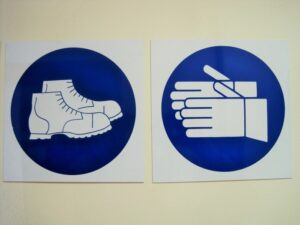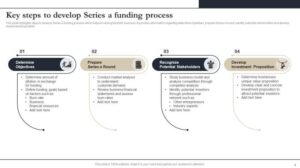
Quantifying achievements in resumes sets the stage for this enthralling narrative, offering readers a glimpse into how numerical evidence can transform a plain job application into a powerful marketing tool. In today’s competitive job market, showcasing your accomplishments with specific metrics not only emphasizes your qualifications but also demonstrates your impact in previous roles. By articulating achievements through numbers, you highlight your value to potential employers and distinguish yourself from other candidates.
Throughout this discussion, we will explore the significance of quantifying achievements, delve into effective metrics to use, and provide strategies for identifying key accomplishments that resonate with hiring managers. Whether you’re in business innovation, sales, or any other field, learning how to present your achievements quantitatively can enhance your resume and increase your chances of landing an interview.
Quantifying Achievements in Resumes
Quantifying achievements is essential for crafting resumes that stand out in a competitive job market. By providing specific metrics and figures, job seekers can effectively demonstrate their value and impact in previous roles, making their applications more compelling to potential employers.
Importance of Quantifying Achievements
Including quantifiable achievements allows candidates to present their contributions in a clear, measurable way. This can significantly enhance their credibility. For example, instead of stating “improved sales,” one could say “increased sales by 30% over six months.” Such specific metrics not only catch the eye of hiring managers but also provide a clearer picture of a candidate’s capabilities.
Effective Metrics to Include in Resumes
When crafting a resume, consider incorporating the following types of metrics:
- Percentage increases or decreases (e.g., “Boosted customer satisfaction ratings by 25%”).
- Sales figures (e.g., “Achieved $1M in sales within the first year of launch”).
- Cost savings (e.g., “Reduced operational costs by 15% through process optimization”).
- Team performance metrics (e.g., “Led a team of 10 that completed projects 20% faster than previous years”).
Identifying Key Achievements
To pinpoint your key achievements, reflect on previous roles and consider the following methods:
- Review past performance evaluations for recognized accomplishments.
- Consider feedback from colleagues or supervisors regarding your contributions.
- Analyze successful projects for quantifiable outcomes that reflect your involvement.
- Utilize the STAR method (Situation, Task, Action, Result) to structure your achievements logically.
Business Innovation
Innovation is a critical driver of success in today’s business landscape. Demonstrating innovative achievements on a resume not only showcases creativity but also aligns with organizations that prioritize forward-thinking solutions.
Showcasing Innovative Achievements
Highlighting innovative work can be done through clear descriptions and outcomes. Consider these strategies:
- Detail projects where you implemented new technologies or processes that improved efficiency.
- Include metrics such as time saved or revenue generated from innovative initiatives.
- Describe your role in cross-functional teams that developed groundbreaking products or services.
Examples of Quantifiable Innovative Projects
Innovative projects often yield substantial results. Examples include:
- Introducing a new software tool that reduced processing time by 40%.
- Launching a marketing campaign that increased brand awareness by 50% within three months.
- Developing an eco-friendly product line that contributed to a 20% increase in sales.
Tailoring Resumes for Innovative Companies
To appeal to companies that value innovation, tailor your resume by:
- Researching the company’s recent projects and mentioning similar experiences.
- Using industry-specific jargon to align with the company culture.
- Focusing on results that demonstrate creativity and problem-solving skills.
International Business
In an international business context, quantifying achievements can be complex due to varying standards and expectations across cultures. Nonetheless, effective metrics are essential for showcasing global success.
Quantifying Achievements Internationally

When working on international projects, consider this approach for quantifying achievements:
- Highlight diverse teams you managed or collaborated with.
- Include metrics that reflect overall project success, like “expanded the client base by 25% across three countries.”
- Demonstrate cultural adaptability by including successful navigation of international markets.
Successful International Projects and Metrics
Examples of international success can include:
- Launching a product in new markets that resulted in a $2M increase in sales.
- Negotiating contracts that saved the company 30% in costs over three years.
- Leading a cross-border initiative that streamlined operations across multiple locations.
Cultural Differences in Achievement Quantification
Understanding cultural nuances is crucial in international business. This can affect how achievements are perceived and quantified:
- In some cultures, team success may be prioritized over individual achievements.
- Quantification standards may vary, with some regions valuing qualitative results more than numerical ones.
- Effective communication of achievements may require adapting to local expectations and formats.
Business Interviews
Preparing to discuss quantified achievements during interviews is vital for making a strong impression. Employers often seek clear examples that demonstrate your capabilities.
Discussing Quantified Achievements in Interviews

To effectively communicate your achievements in interviews:
- Prepare concise summaries of key accomplishments using the STAR method.
- Practice discussing metrics in a way that emphasizes your role in achieving them.
- Anticipate questions related to quantifiable results and prepare data-driven responses.
Common Questions Requiring Quantitative Responses
Be ready to answer questions such as:
- “Can you provide an example of a time you exceeded sales targets?”
- “How did you manage to improve efficiency in your last role?”
- “What metrics do you use to track your team’s performance?”
Presenting Numerical Achievements Effectively
When discussing your achievements:
- Use specific numbers to illustrate your points.
- Focus on the impact of your achievements on the organization.
- Be confident and articulate when explaining how you achieved those results.
Summary
In conclusion, the ability to quantify achievements in resumes is crucial for anyone looking to make a lasting impression during their job search. By effectively highlighting your accomplishments with accurate metrics, you not only reflect your skills but also your dedication and results-oriented mindset. Embrace the power of numbers to tell your professional story and stand out in the hiring process, ensuring that your resume captures the attention it deserves.
FAQ Corner
Why is it important to quantify achievements in a resume?
Quantifying achievements provides concrete evidence of your skills and impact, making it easier for employers to understand your value.
What types of metrics should I include in my resume?
Include metrics such as sales figures, percentage increases, project completion rates, and customer satisfaction scores to showcase your accomplishments.
How can I identify key achievements to quantify?
Reflect on your past roles and consider moments where you made a measurable impact, such as exceeding sales targets or improving team efficiency.
Can quantifying achievements benefit my cover letter?
Absolutely! Integrating metrics in your cover letter can reinforce your qualifications and provide a compelling narrative that complements your resume.
How should I present quantified achievements during job interviews?
Be prepared to discuss specific metrics related to your achievements and how they contributed to past employers’ success, using clear examples.



